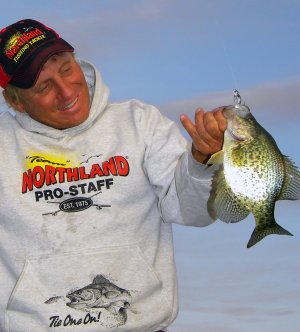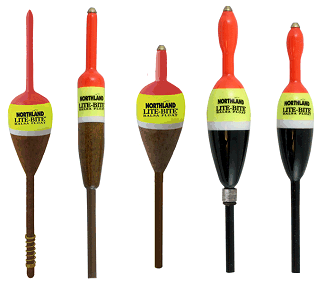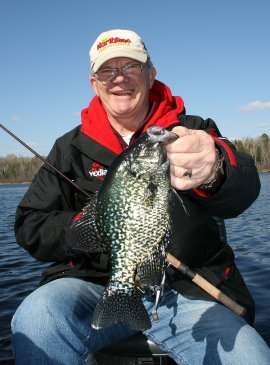
I like ice fishing. However, I love open water fishing and the good news is it won’t be long before those of us who love open water can get started for 2010.
Crappies offer some of the first open water fishing opportunities. These scrappy fighters are somewhat elusive later in the summer, but that is often not the case now.
Crappies invade the shallows in the spring, first to feed, and later to spawn. Shallow, dark-bottom bays on the north side of lakes are classic spring crappie haunts as these areas warm quickly, drawing in “crappie food”, which in turn draws crappies.
These bays are classic spots. Other good spots are shallow reed banks, marinas, and channels. In fact, one of my favorite crappie spots is a shallow channel off the main lake where the crappies make foraging runs periodically during spring.
Spring crappie presentations are pretty simple. A jig fished below a slip bobber tipped with a crappie minnow is a favorite. My favorite jig is a pink/white 1/32-ounce Gypsi Jig tipped with a small, but very lively crappie minnow. A small split shot added about a foot above the jig completes the system.

One key to the system is the use of the right bobber. The right bobber is small, sensitive, and bright colored to allow it to be seen in low light since the peak bite is often right before dark. The new Super-Pro Lite-Bite Slip Bobbers are dynamite tools for this fishing. They feature sleek, elongated pear shapes to help detect the lightest bites. Plus, they have hi-vis stems that can be seen easily in low light and, the stems also feature Slip-N-Slide grommets that allow the line to slide through like its greased enabling anglers to catch even the lightest of biting spring crappies.
Small jigs fished below bobbers fish well on light line. I prefer 4-pound test Trilene XL monofilament fished on a 7-foot light action spinning rod and reel combination. This combination allows for long casts and the light line presents that small minnow/jig combination in a natural, fish-attracting fashion.

A final presentation tip regarding spring crappies is to keep your bait lively and change it often. Lively bait attracts and catches more fish than dying, worn-out bait. In fact, last spring I outfished an angler next to me along the bank of my favorite crappie channel using the same presentation. The only difference in our methods is that I changed bait often and he didn’t. I keep my spring crappie minnows in Frabill’s Personal Bait Station. This container is insulated and has an aerator to keep my minnows alive. Plus, it features a lift-out net that lets me drain the water before catching a minnow preventing me from getting wet, cold hands on those chilly spring outings.
As was mentioned earlier, low light periods often mean peak crappie bites. Last spring, my daughter Hannah and I had some memorable evenings by waiting to go fishing just before dark and then staying an hour or so after. We usually got to our fishing spot just as others were leaving. The best bite usually happened just at dark as the number of fish caught increased at that time and so did fish size!
One advantage to spring crappie fishing is, like in the above example, that the fish are often accessible to anglers fishing from shore. Quick trips to crappie spots can happen without the hassle of bringing a boat and, those who don’t own boats can get in on this good fishing action as well.
Good fishing action is the obvious goal of most who fish. Following the tips just provided can help anglers jump-start their 2010 fishing action. As always, good luck on the water!

